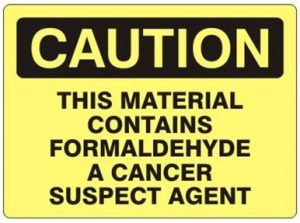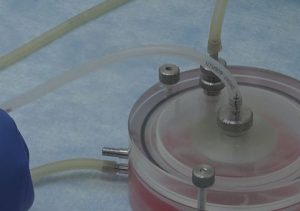News About More Carcinogens in E-cigarettes Than in Tobacco Cigarettes Is Just Scaremongering at Its Worst
The findings of a yet-to-be-published Japanese study that were conveniently picked up by virtually every big news outlet in the world struck fear in the hearts of millions last week. If the headlines are to be believed, electronic cigarettes produce up to ten times more carcinogens than tobacco cigarettes. That contradicts all the research that’s been done on e-cigarettes so far, but if it’s in newspapers and on the internet, it must be true, right?
 So here’s the story: a team of health experts commissioned by the Japanese Health Ministry to test several e-cigarette models and report their findings allegedly detected levels of formaldehyde and acetaldehyde higher than the ones found in cigarette smoke. In one unnamed brand, the scientists led by Dr. Naoki Kunugita, of the National Institute for Public Health, found 10 times more formaldehyde than is contained in cigarette smoke. Although formaldehyde and acetaldehyde are naturally occurring substances, the levels reported are indeed concerning. But then again that’s just one brand, and the conditions in which the results were obtained are yet unknown.
So here’s the story: a team of health experts commissioned by the Japanese Health Ministry to test several e-cigarette models and report their findings allegedly detected levels of formaldehyde and acetaldehyde higher than the ones found in cigarette smoke. In one unnamed brand, the scientists led by Dr. Naoki Kunugita, of the National Institute for Public Health, found 10 times more formaldehyde than is contained in cigarette smoke. Although formaldehyde and acetaldehyde are naturally occurring substances, the levels reported are indeed concerning. But then again that’s just one brand, and the conditions in which the results were obtained are yet unknown.
But did that stop the media from spinning the story into headlines like “E-cigarettes contain 10 TIMES more cancer-causing chemicals than regular cigarettes” (Daily Mail) or Scientists “Say E-Cigarettes Contain 10 Times The Level Of Cancer Causing Carcinogens Than Regular Cigarettes”, among others? Of course not, after all who cares about the truth nowadays, right? It’s all about the money. What does it matter if the people who actually trust these news sources give up on electronic cigarettes and go back to the “death sticks” they now consider safer? As long as their headlines sell, anything goes. Luckily, though, there are still some honorable people out there willing to actually do some research and report the truth.
People like Konstantinos Farsalinos, a doctor at the Onassis Cardiac Surgery Center in Greece, and a long-time supporter of electronic cigarettes. After having his inbox flooded with emails from alarmed vapers, he actually contacted Dr. Naoki Kunugita about his findings. He learned that the news-media reports refer to a recent evaluation of a newer-generation device, in which Kunugita found 1600μg formaldehyde per 15 puffs. That’s just one out of several Japanese products tested, not to mention that the details of what went wrong are yet to be revealed. It could have been a malfunctioning device, a low level of e-liquid, a high power level, etc. This single extreme case does not justify the media scaremongering that ensued.
Not to mention that previous research has found carcinogen levels, including formaldehyde, in electronic cigarettes are several times lower than in tobacco cigarettes. In 2013, an international team of scientists tested 12 different brands of electronic cigarettes, and found levels of carcinogenic compounds were between 9 and 450 times lower than in regular cigarettes. However, Peter Hajeck, Professor of Clinical Psychology at Queen Mary University London, says that significant levels of formaldehyde can be detected in overheated devices. Which appears to be the case with the second generation e-cigarettes analyzed by Naoki Kunugita. He told Agence France Press that when the wire that vaporizes the e-liqiuid gets overheated, higher amounts of those harmful substances seem to be produced.
Lastly, while the media articles simply say e-cigarettes contain more carcinogens than tobacco cigarettes, Dr. Naoki Kunugita’s study only mentions two – formaldehyde and acetaldehyde. Honestly, it would probably be impossible to find anything similar to cigarettes with a higher amount of carcinogens in it. There is Acetylene, Ammonia, Cyanide, Benzene and many others, some of which are not even found in electronic cigarettes. But the readers of these articles don’t know that. They see carcinogens used generally and assume cigarettes actually contain less of them as e-cigarettes, which couldn’t be further from the truth.
Reputed scientists like Dr. Farsalinos described the media frenzy as “completely inappropriate”, while Karl Erik Lund, head of research at SIRUS (Norwegian Institute for Alcohol and Drug Research) declared himself disappointed that journalists don’t actually check if the information they’re given has any truth to it. “This is risk communication at its worst,” Lund says. He added that e-cigarettes “at their best are absolutely brilliant to replace smoking, at their worst, they can be hazardous products. The purpose of product regulation must be to weed out potentially dangerous products.”
We’ll just have to wait for the study to be published before we can comment more on the results, but there is no excusing the slanderous propaganda unleashed in the media. It just goes to show you how much e-cigarette opponents fear them and the lengths they would go to make sure they fail.

















No review just a question on why Drexel University School of Public Health, published study by Dr. Burstyn which confirms that chemicals in electronic cigarettes pose no health concern for users or bystanders has received no publicity whatsoever.